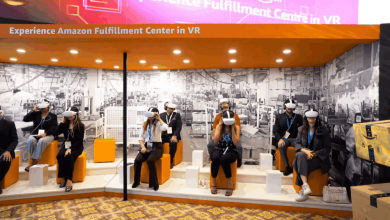Streamline Business Messaging with Airdocs CCM

In today’s fast-paced business environment, companies exchange thousands of messages daily across multiple channels, from emails and SMS to social media and instant messaging platforms. Yet, despite this constant flow of communication, many organizations struggle with fragmented messaging systems, inconsistent brand voice, and missed opportunities to engage customers effectively. The solution lies in adopting a comprehensive approach to managing all customer touchpoints through advanced Customer Communication Management (CCM) solutions like Airdocs.
Modern businesses face an unprecedented challenge: how to maintain meaningful, personalized relationships with customers while scaling operations efficiently. Traditional communication methods often create silos, leading to disjointed customer experiences and operational inefficiencies that can cost businesses both time and revenue.
Understanding Customer Communication Management (CCM)
What is Customer Communication Management?
Customer Communication Management represents a strategic approach to orchestrating all customer-facing communications throughout the entire customer lifecycle. A CCM software helps to streamline and automate business communication, bringing all conversations to a single cloud-based location with a single user interface. This comprehensive platform stores and provides the means to create business correspondence throughout the customer’s journey, from initial contact to ongoing relationship management.
CCM solutions go beyond simple messaging tools by integrating data from various sources, applying business logic, and delivering personalized communications across multiple channels simultaneously. Modern Customer Communication Management platforms create a unified communication ecosystem that ensures consistency, compliance, and enhanced customer experiences across all touchpoints.
The Evolution of Business Messaging
Business messaging has evolved dramatically from traditional mail and phone calls to today’s omnichannel digital landscape. Companies now interact with customers through websites, mobile apps, social media, chatbots, and various messaging platforms. This evolution has created both opportunities and challenges, as businesses must maintain consistency across all these touchpoints while meeting customer expectations for immediate, relevant responses.
The shift toward digital communication has also raised customer expectations significantly. Today’s consumers expect personalized, timely, and contextually relevant communications that acknowledge their preferences, purchase history, and current needs. Meeting these expectations requires sophisticated technology and strategic planning.
Why Traditional Communication Methods Fall Short
Legacy communication systems often operate in isolation, creating several critical problems. First, they generate inconsistent messaging across different departments and channels, leading to confused customers and weakened brand perception. Second, manual processes are time-consuming and error-prone, reducing operational efficiency and increasing costs. Third, limited integration capabilities prevent businesses from leveraging customer data effectively, resulting in generic communications that fail to engage recipients.
Additionally, traditional methods struggle with compliance requirements, particularly in regulated industries where communication standards must be maintained consistently across all customer interactions.
Key Benefits of Streamlined Business Messaging
Enhanced Customer Experience and Satisfaction
Key benefits of CCM software include improved customer experiences, streamlined communication processes, enhanced compliance with regulatory requirements, and the ability to integrate with existing systems for seamless operations. When businesses implement comprehensive communication management, customers receive consistent, relevant messages regardless of which department initiates contact or which channel they prefer to use.
This consistency builds trust and confidence in the brand while reducing customer frustration caused by conflicting information or redundant communications. Customers appreciate receiving the right message at the right time through their preferred channel, leading to higher satisfaction rates and stronger brand loyalty.
Improved Operational Efficiency
Today’s customer support teams are rapidly moving from Excel spreadsheets to automated workflows. In other words, communications are going digital. Automation eliminates repetitive manual tasks, allowing staff to focus on higher-value activities such as strategic planning and complex customer relationship management.
By centralizing communication management, teams can coordinate more effectively, avoid duplicated efforts, and respond to customer needs more quickly. This improved efficiency translates directly into better resource utilization and increased productivity across the organization.
Cost Reduction and Resource Optimization
By streamlining and automating communication processes, businesses can reduce operational costs associated with manual efforts and inefficiencies. The automation of routine communications significantly reduces labor costs while improving accuracy and speed. Additionally, centralized management reduces technology costs by eliminating redundant systems and improving resource allocation.
CCM software can fully automate customer communications by integrating customer data sources with business logic. Handling processes by machine instead of humans reduces employee human-hours. This automation extends beyond simple message delivery to include complex workflow management and decision-making processes.
Compliance and Regulatory Advantages
For businesses in regulated industries, CCM solutions provide essential compliance capabilities. CCM, especially for industries like healthcare and finance, deals with strictly regulated industries. It embeds the regulatory requirements within the communication processes that help ensure all customer communications meet legal and industry standards automatically.
This built-in compliance reduces the risk of violations and associated penalties while simplifying audit processes and regulatory reporting requirements.
How Airdocs CCM Transforms Business Communications
Centralized Communication Hub
Airdocs CCM creates a unified platform where all customer communications are managed, monitored, and optimized. This centralization eliminates information silos and ensures that every team member has access to complete customer communication histories, enabling more informed decision-making and personalized service delivery.
The centralized approach also facilitates better oversight and quality control, as managers can monitor communication effectiveness, identify trends, and implement improvements across all channels simultaneously.
Automation and Workflow Integration
The platform’s advanced automation capabilities handle routine communications while triggering appropriate workflows based on customer actions, preferences, or lifecycle stages. Automation can help streamline mundane tasks like data entry and customer onboarding, freeing up your team to focus on other important work or providing extra attention to those customers who really need it.
Smart workflows ensure that the right message reaches the right person at the optimal time, improving engagement rates and conversion outcomes while reducing manual oversight requirements.
Personalization at Scale
Airdocs CCM leverages customer data to create highly personalized communications without requiring individual manual customization. With automation, businesses can personalise interactions using customer data, crafting messages that speak to individual preferences without straining resources. This capability enables businesses to maintain personal relationships with thousands of customers simultaneously.
The system analyzes customer behavior, preferences, and history to automatically adjust messaging tone, content, and timing for maximum relevance and impact.
Multi-Channel Communication Management
The platform manages communications across all relevant channels, ensuring consistent messaging whether customers interact via email, SMS, social media, or mobile applications. This omnichannel approach meets customers where they are while maintaining brand consistency and message coherence across all touchpoints.
Implementation Strategies for Maximum Impact
Assessment and Planning Phase
Successful CCM implementation begins with a thorough assessment of current communication processes, identifying pain points, inefficiencies, and opportunities for improvement. This analysis should include stakeholder interviews, process mapping, and technology audits to establish a clear baseline and define specific objectives.
Planning should also consider customer journey mapping to understand how communications fit into the broader customer experience and identify critical touchpoints that require special attention.
Integration with Existing Systems
Effective CCM implementation requires seamless integration with existing CRM systems, marketing automation platforms, and other business applications. This integration ensures data consistency and enables automated workflows that span multiple systems and departments.
The integration process should prioritize data quality and establish clear protocols for maintaining information accuracy across all connected systems.
Training and Adoption Best Practices
User adoption is critical for CCM success. Comprehensive training programs should cover not only technical skills but also strategic concepts and best practices for customer communication. Change management strategies help ensure smooth transitions and minimize resistance to new processes.
Ongoing support and continuous education programs help teams maximize the platform’s capabilities and adapt to evolving customer needs and business requirements.
Measuring Success: KPIs and ROI
Key Performance Indicators to Track
Essential metrics for evaluating CCM effectiveness include response times, customer satisfaction scores, engagement rates, and conversion metrics. Operational KPIs such as cost per communication, process efficiency ratings, and error rates provide insights into system performance and resource utilization.
Advanced analytics capabilities enable deeper insights into customer behavior patterns, communication preferences, and campaign effectiveness, supporting data-driven optimization strategies.
Calculating Return on Investment
ROI calculations should consider both cost savings from improved efficiency and revenue increases from enhanced customer engagement. Factors include reduced labor costs, decreased error rates, improved customer retention, and increased sales conversion rates.
Long-term benefits such as improved brand reputation, customer loyalty, and market competitiveness also contribute to overall ROI but may require longer measurement periods to fully realize.
Future-Proofing Your Communication Strategy
Emerging Trends in Business Messaging
The communication landscape continues evolving with artificial intelligence, machine learning, and advanced analytics becoming increasingly important. Future CCM solutions will leverage these technologies to provide even greater personalization, predictive capabilities, and automated decision-making.
Voice communications, video messaging, and interactive content are becoming more prevalent, requiring CCM platforms to adapt and expand their capabilities to support these emerging channels.
Scalability and Growth Considerations
Effective CCM solutions must accommodate business growth and changing requirements without requiring complete system overhauls. Cloud-based platforms offer the flexibility and scalability needed to support expanding customer bases and evolving communication needs.
Investment in robust CCM infrastructure positions businesses to take advantage of future opportunities while maintaining operational efficiency and customer satisfaction standards.
Conclusion
Streamlining business messaging through comprehensive Customer Communication Management transforms how organizations interact with customers, creating more efficient operations and stronger relationships. The benefits extend beyond simple cost savings to include improved customer experiences, enhanced compliance capabilities, and better strategic decision-making support.
Organizations ready to transform their communication strategies and achieve these benefits should explore comprehensive Customer Communication Management solutions that can adapt to their specific needs and growth objectives. The investment in advanced CCM capabilities pays dividends through improved efficiency, enhanced customer relationships, and sustainable competitive advantages in today’s dynamic business environment.
Read More From Techbullion




